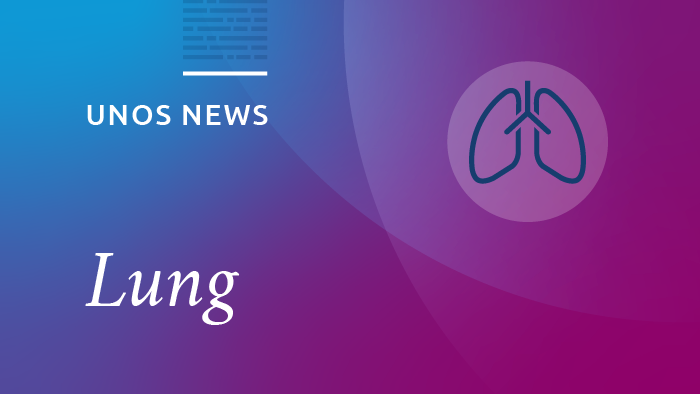Modifications to the Lung Allocation Score (LAS) system will be implemented on February 19, 2015. Among the revisions are policy changes that have occurred over the course of many years, resulting from numerous proposals. In order to prepare your lung candidates for the upcoming changes, UNOS offers the following tips.
New Data Variables
The new LAS calculation is largely based on variables transplant programs already report to the OPTN for lung candidates. Transplant programs can already report cardiac index (CI) and central venous pressure (CVP) to the OPTN for their lung candidates in WaitlistSM. Beginning on February 19, these variables will be factored into the LAS calculation. Additionally, the system will allow the entry of CVP data obtained through means other than a heart catheterization.
Total bilirubin (bilirubin) is the only new variable added to the calculation that is not yet collected in the system. Bilirubin will be collected and stored serially like PCO2 is now. In preparation for the February 19 implementation, UNOS strongly recommends collecting bilirubin values for your lung candidates. On February 19, you will be able to add the candidate’s current bilirubin value, as well as historical values.
Serum creatinine, which is currently used in the LAS calculation, will also be collected and stored serially. Like bilirubin and PCO2, transplant programs will be able to report current and historical values for serum creatinine.
While entry of historic values for the serial data (PCO2, bilirubin, and serum creatinine) is optional, these values may impact a candidate’s LAS.
Missing, Expired, or Below Threshold Data
Currently, if data are missing or expired for either the candidate’s functional status or assisted ventilation fields, the candidate’s LAS is set to zero. In the new system, policy default values for these variables will be used in the calculation when the data are missing or expired.
Lung Diagnoses
In the LAS system, lung diagnoses are divided into four diagnosis categories: A) obstructive lung disease; B) pulmonary vascular disease; C) cystic fibrosis; and D) restrictive lung diseases. The list of lung diseases and their diagnosis groupings are largely the same as the previous LAS system, but more diagnoses have been added.
Added to Group B
- Pulmonary capillary hemangiomatosis
Added to Group D
- ABCA3 transporter mutation
- Idiopathic interstitial pneumonia (IIP), with at least one or more of the following disease entities:
- Acute interstitial pneumonia
- Desquamative interstitial pneumonia
- Nonspecific interstitial pneumonia
- Respiratory bronchiolitis-associated interstitial lung disease
- Pulmonary lymphangiectasia (PL)
- Secondary pulmonary fibrosis (specify cause)
- Surfactant protein C mutation
Additionally, transplant programs will be able to request an exception from the Lung Review Board to register candidates younger than 11 years, 9 months old with an “other” diagnosis if the candidate’s diagnosis is not included in the detailed disease diagnosis list.

